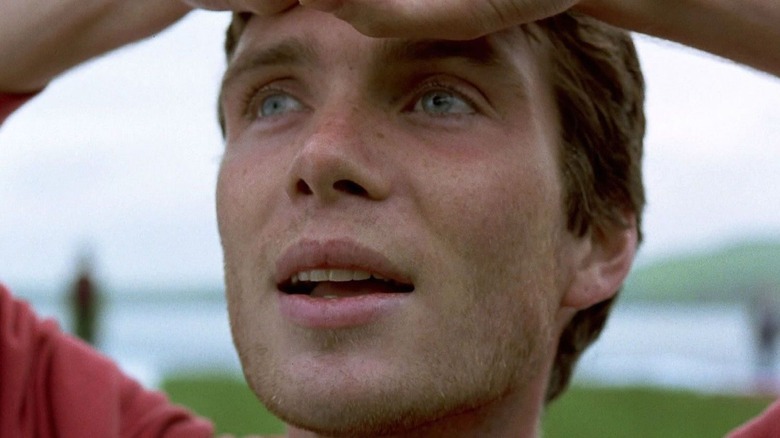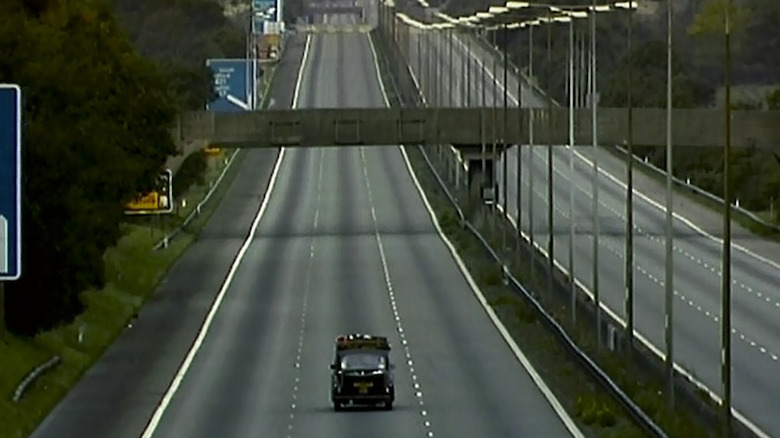This Is How The Motorway Scene From 28 Days Later Was Really Filmed
When it comes to intense post-apocalyptic horror movies, there's one from the early 2000s that stands head-and-shoulders above the rest; "28 Days Later." Helmed by legendary director Danny Boyle, of "Trainspotting" and "The Beach" fame — it picks up after the deadly Rage virus has swept across Britain, turning the infected into speedy monsters who bite, rip, and tear into their victims. Cillian Murphy leads the small cast as Jim, a courier who wakes up alone in a hospital completely unaware of the chaos that the country has descended into.
It's a blistering experience and shows just how terrifying fast zombies really can be. The sheer horror that Boyle pumps into nearly every scene is genuinely incredible because while it isn't crammed with jump scares, the atmosphere the director created easily fills audiences with dread.
Part of the reason why it's so impactful comes down to the desolate, deserted nature of the United Kingdom. And while filming took place in central London between 4 and 5 a.m. to capture the empty city, the journey the survivors took up north to Manchester was a little trickier, particularly since they were traveling on what is usually the busiest motorway in the country. If that sounds like a logistical nightmare, that's because it was.
Rolling roadblocks helped make the scene possible
The brief scene showing Jim and Selena (Naomie Harris) driving on the deserted M1 to Manchester with Frank (Brendan Gleeson) and Hannah (Megan Burns) isn't the most vital moment in the story, but it perfectly adds to the feeling that Britain has been completely lost. An empty motorway is an eerie sight, simply because it almost never happens. It was a difficult task to pull off back in 2001, but the production crew managed to get permission to shoot a brief scene in the early hours of the morning.
Per IMDb, between the hours of 7 and 9 a.m., British police created a rolling roadblock to slow motorists down while the filmmakers shot footage of Frank's cab driving up the deserted motorway. And on the commentary track for the film (via Hero Magazine), Danny Boyle revealed that the real traffic was only just out of the frame, as his crew used a total of 10 cameras to shoot the 60-second-long scene.
The director explained the reasoning behind the striking scene, saying, "We wanted to see Britain as a mythic landscape. Unfortunately, it's a relatively small place and we tend to be over-familiar with it through background shots from even a few days of television." He went on to add that "we felt it was important to try and make it unfamiliar, so audiences could look at it in a slightly different way, a bigger way, than they do in their normal lives."
Well, it certainly worked. The eerily quiet, but utterly intense vision of post-apocalyptic Britain became the new benchmark for what could be done in the horror genre, with many calling it the best zombie movie ever.

